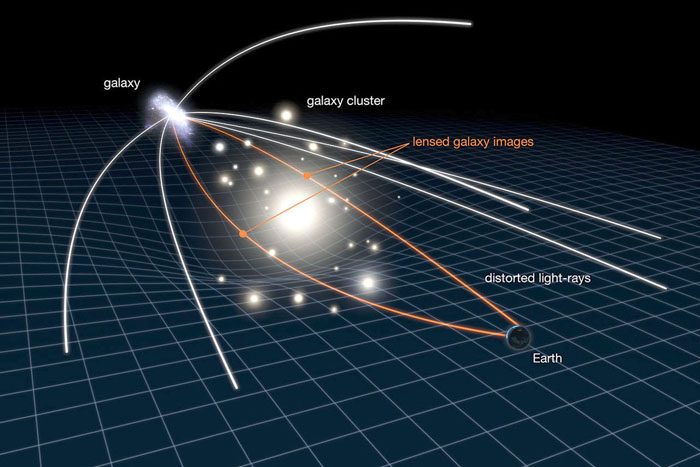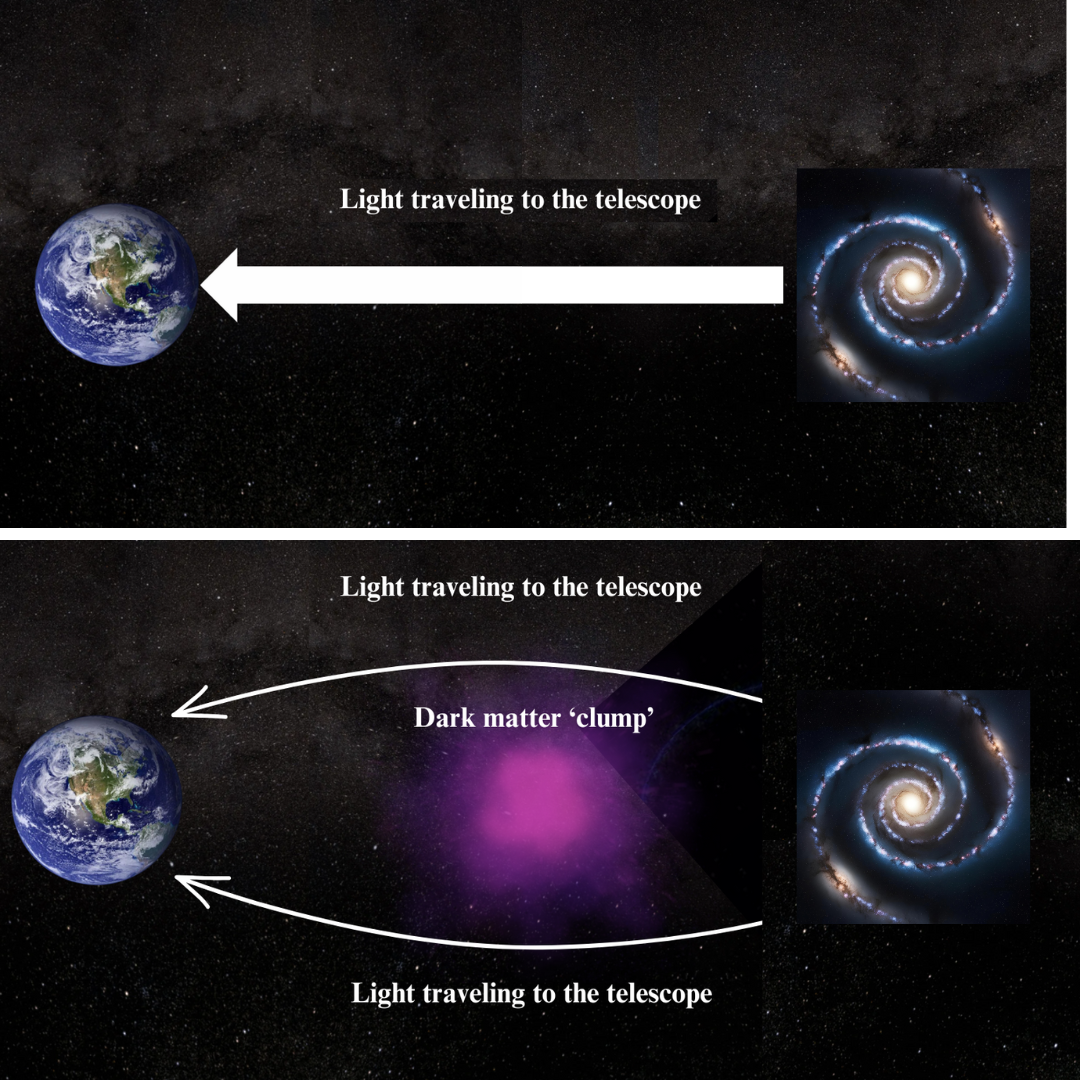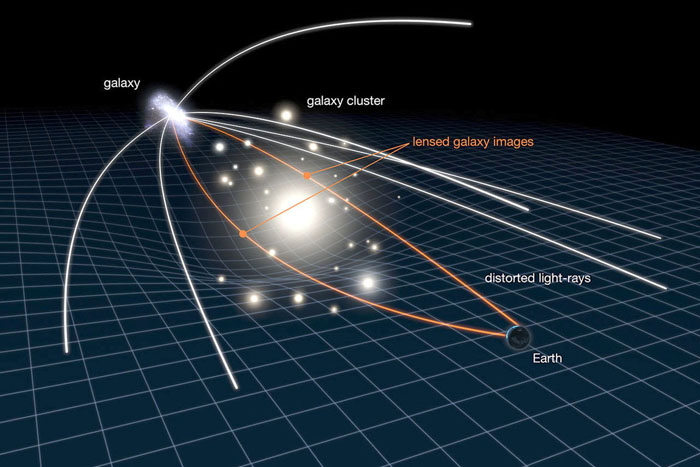Dark matter clumps could act as stellar lampshades, drifting between Earth and distant stars, dimming them by an almost imperceptible amount, a new study suggests.
If this idea is correct, such “dark matter lampshades” could help solve the mystery of what dark matter is made of. This is a huge problem in science because, despite making up around 85% of the matter in the cosmos, no one knows what dark matter actually is.
The team’s research mainly focuses on one particular candidate for dark matter: massive astrophysical compact halo objects, or “MACHOS.”
The difference between MACHOs and other possible candidates for dark matter is that MACHOs are thought to be composed of the same type of matter that makes up stars, planets, and our bodies: baryonic matter.
So, whereas other dark matter candidates remain effectively invisible because they are composed of non-baryonic matter that does not interact with light, MACHOs do interact with light, albeit weakly.
“While we usually say dark matter does not interact with light at all, making it totally transparent and invisible, the truth is, it is allowed to interact with light a tiny bit,” team member Melissa Diamond, from Queen’s University in Ontario, Canada, told Space.com.
“Dark matter might form large clumps or clouds, often called MACHOs,” she said. “There may be enough dark matter in these MACHOs that their weak interactions with light collectively block light from passing through the cloud, like how a lampshade blocks some but not all light from getting through.”
She added that, if one of these lampshade-like MACHOs passes between the Earth and a distant star, we might see it block out some of the starlight, making the star look a little dimmer temporarily.
The technique also works for any form of dark matter that has weak interactions with light and which can weakly interact with itself to come together and form compact clumps.
“Certain types of millicharged dark matter or self-interacting dark matter models are some examples which may fit this description,” Diamond said. “It is possible we have not seen this lampshade effect because we have not looked for it yet.
“It is also possible that we have not seen this because the types of MACHOs that could cause the lampshade effect do not make up all of the dark matter.”
Lampshade hunting
The fact that dark matter seems not to interact with light (or electromagnetic radiation), or does so incredibly weakly, means that, to hunt it, astronomers have to rely on its interaction with another of the universe’s four fundamental forces: gravity.
Dark matter has mass, and according to Einstein’s theory of gravity, general relativity, objects with mass create a curvature in space-time (the four-dimensional unification of space and time) from which gravity arises.
When ordinary matter or light rides this curvature, its motion is impacted. For light, this curvature gives rise to a phenomenon called “gravitational lensing,” during which the path from a background source is curved by a body or “lens” coming between it and and Earth. This amplifies the background source.
In some cases, this amplification is so small it can’t be seen for a single source but can be determined when statistically considering a multitude of background sources en masse. This is known as “gravitational microlensing.”

“Compact clumps of dark matter are usually searched for with microlensing,” Diamond said. “When the clump passes between the Earth and a distant star, the clump’s gravity will bend space-time a little bit. This will bend the path of the starlight and focus it, like a lens, causing the star to briefly appear brighter.”
Currently, microlensing surveys monitor the stars to see if any of them briefly brighten, perhaps due to passing clumps of dark matter. However, Diamond pointed out that, when the dark matter clumps become too large and puffy or diffuse, they lose their lensing power and become harder to observe in microlensing surveys.
“This is where the lampshade effect can make a big difference,” she continued. “While the clump might be too puffy to make for a good lens, it can still block some starlight, causing the star to dim instead of brightening.
“The advantage of this technique is that it works for dark matter objects that are difficult or impossible to search for using available techniques.”

Diamond pointed out that there are astronomical surveys, such as the Optical Gravitational Lensing Experiment (OGLE), dedicated to watching large numbers of stars over time to see if they get any brighter due to microlensing. However, these surveys could also be used for this newly proposed dark matter lampshade hunting technique.
“We can use the existing data from these surveys for free to also look for dimming from this lampshade effect,” Diamond continued. “This technique lets us get new use out of existing data, and lets us look for new types of MACHOs that microlensing surveys might not otherwise be sensitive to.”
One of the big issues that remains for the team is to determine how they can distinguish between dimming caused by a dark matter lampshade or dimming caused by the passage of a more conventional astronomical object.
“That is very tricky to do. Things like planets, other stars, or gas clouds might also pass in front of a distant star and cause it to dim,” Diamond explained. “We would first want to estimate how often we expect ‘normal’ astrophysical objects to pass in front of a star and compare this to how often we expect dark objects to do the same.”
She added that the team could also try to compare how the star’s brightness evolves as the object passes in front of it, reasoning that something opaque, like a planet, would cause the star to appear to dim differently than something semi-transparent, like a dark matter cloud, would.
“If we see the lampshade effect in action, it will tell us about what dark matter could be, which is exciting,” Diamond said. “However, if we do not, that is also exciting, because it shows us what dark matter cannot be.”
Related Stories:
“I was surprised to learn that microlensing surveys, which are designed to look for stellar brightening, are also really sensitive to stellar dimming,” Diamond said. “We have not applied this technique to existing data yet, but we would be happy to do so, especially if we can work with groups that have specific MACHO models they want to search for.
“We may try to look through the existing microlensing data to see if there is any evidence for stellar dimming that could come from MACHOs.”
The team’s research was published in April in the journal Physical Review Letters.



